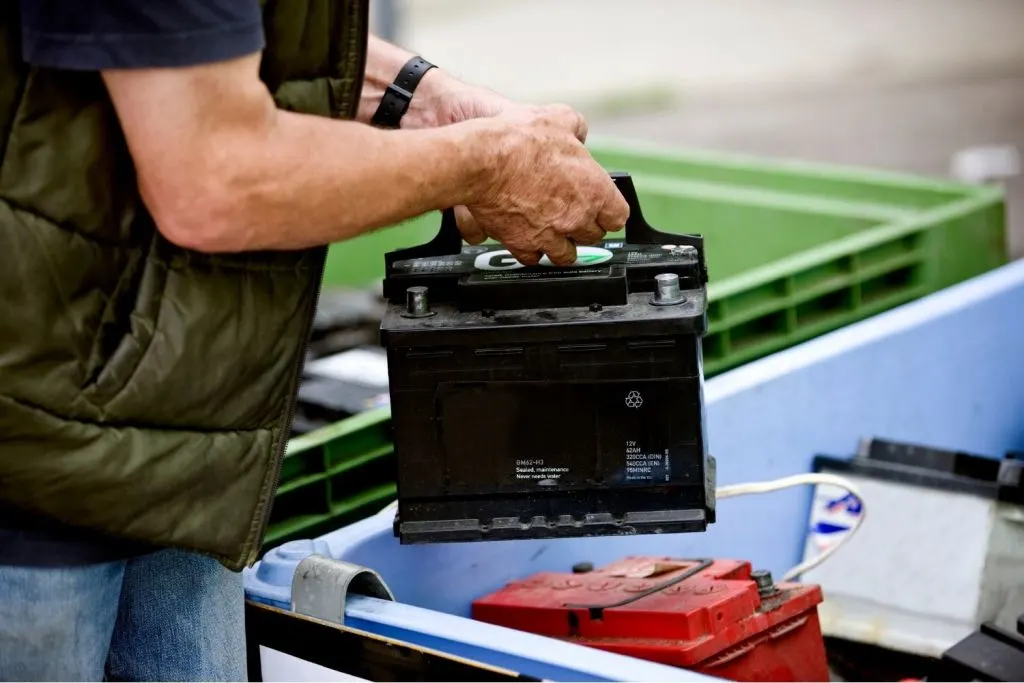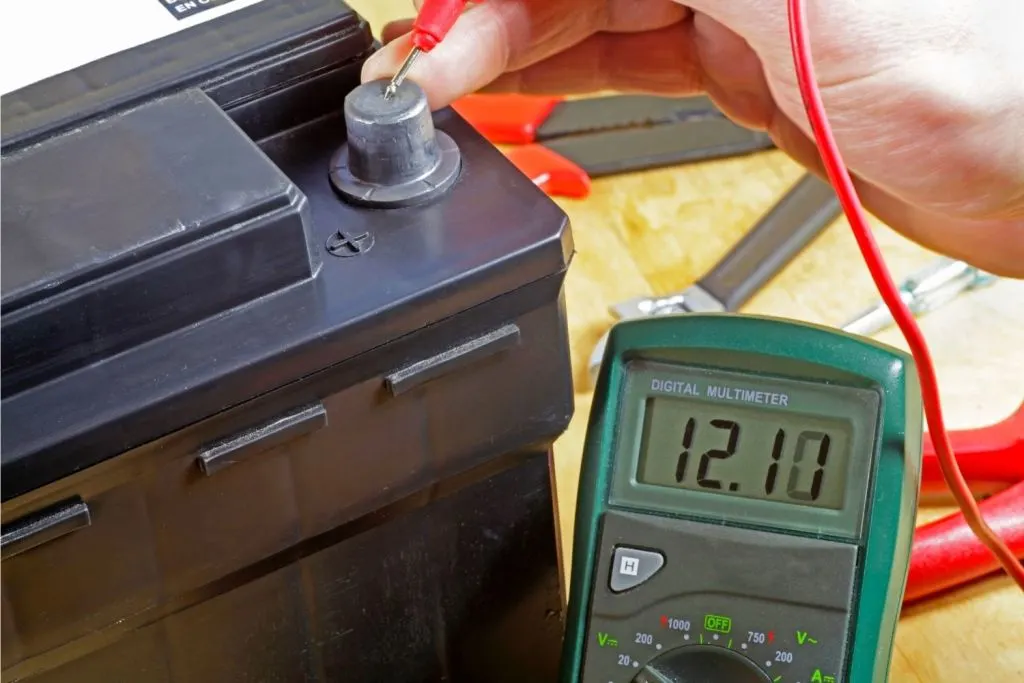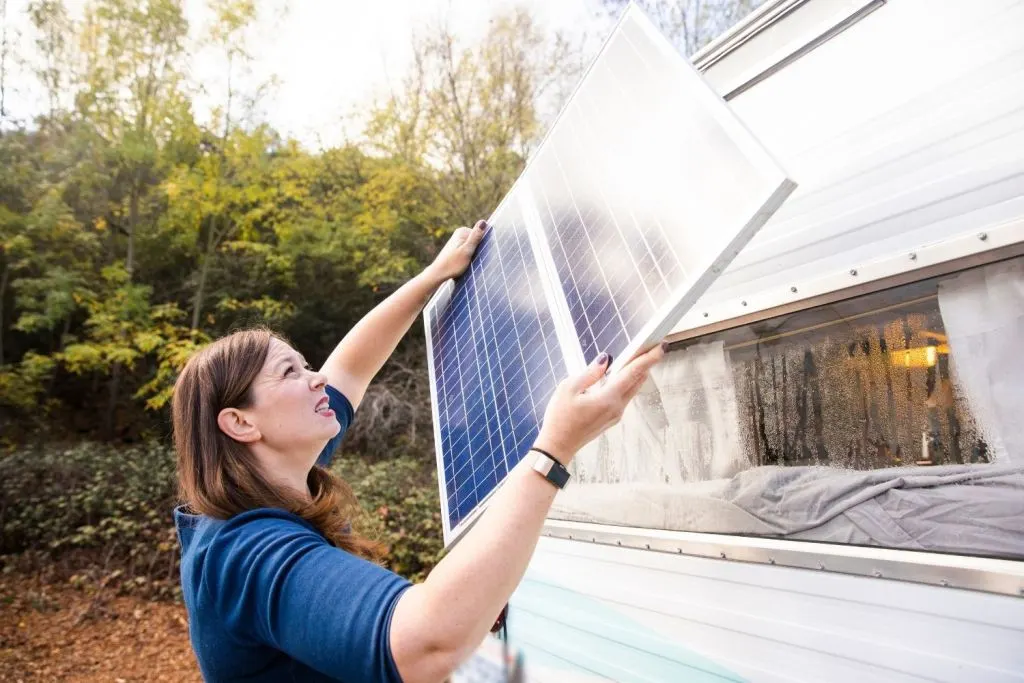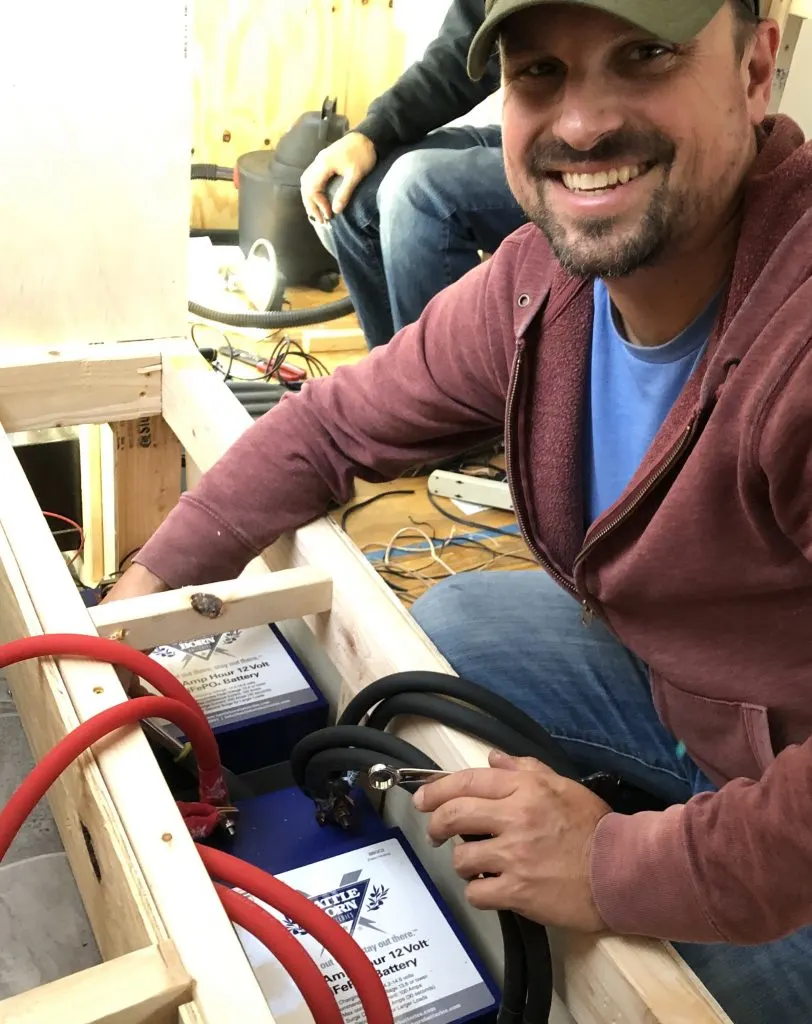Lead acid batteries have been the gold standard for cars, trucks, and RVs for longer than any of us can remember.
Mostly, they are reliable, safe, and relatively cheap.
They have their issues, though. And as technology improves with alternative power sources, many RVers are switching.

What are Lead Acid RV Batteries?
Lead acid batteries have been around for over a century. A French physician named Gaston Planté is credited with first making these rechargeable batteries available for commercial use way back in 1859.
Like all batteries, they don’t actually create electricity; they store it. How they work is pretty complicated, but here’s a simplified explanation:
How Lead Acid RV Batteries Work
Lead acid batteries are made up of individual cells that are connected internally in series. Each cell contains lead plates with a separator between them and is filled with an electrolyte made from a mixture of sulfuric acid and water.
A chemical reaction between the lead plates and the sulfuric acid causes the plates to become positively and negatively charged.
When an electrical circuit is closed, such as turning on a light switch, electrons flow from the negative plate to the positive plate, powering the circuit. The size of the lead plates and the amount of electrolyte determine the amount of charge a battery can store.

Flooded, Sealed, and AGM RV Batteries
Flooded lead acid batteries, also called wet-cell, are the most common. They need to be mounted upright so they don’t leak.
Sealed lead acid batteries are also known as maintenance-free. You can’t add water to them, but you also don’t have to worry about them leaking.
Another kind of lead acid battery is AGM (Absorbent Glass Mat) style, which has a thin fiberglass mat between the lead plates. These are popular because they are not affected by motion or vibrations. A Gel battery mixes silica into the electrolyte solution to thicken it into a gel. AGM batteries are more expensive but tend to offer better performance in extreme temperatures.
5 Reasons to Avoid RV Lead Acid Batteries
Though many people swear by lead acid batteries as a tried-and-true way to power up their RVs, there are some good reasons you may want to go with another type of battery.
Besides being heavy and bulky, and the fact that they contain hazardous materials (sulfuric acid and lead), here are five other factors to consider:
#1 Limited Discharge Capacity
As a lead acid battery is used, its voltage drops proportionally to its discharge state. In other words, lead-acid batteries should really only be used up to 50 percent.
After you have used up 50 percent of the battery, the voltage drops too much for it to be usable. And if you do keep using it, you risk permanent damage to the battery.

#2 Battery Maintenance
With lead acid batteries, you have to monitor the electrolyte (battery acid) levels and replenish it every so often by adding distilled water. It is necessary to clean up the corrosion that builds up on the terminals, too.
#3 Limited Lifespan
Eventually, they stop charging, and Murphy’s Law says it will always be under the worst possible circumstances!
They are designed to last at least six years when properly maintained, but we know plenty of RVers that replace them more often than that to try and stay on the safe side.
#4 Inefficient for RV Solar Setups
If you are using lead acid batteries with solar, you could be losing power.
When compared to modern alternatives, lead acid batteries are highly inefficient for both charge and discharge. This means you’ll see a loss in amps while charging and a fast voltage drop during discharge that decreases the total capacity of your battery.

#5 Venting and Size Considerations
Flooded lead acid batteries release toxic hydrogen gas when charging, and these vapors can be dangerous. So, you need to make sure the batteries are in an enclosed space that’s vented to the outside. They also take up lots of space on board the RV which could be used for other purposes.
Alternatives to Lead Acid Deep Cycle Batteries
When it comes to RVs, lithium batteries have several advantages over lead acid batteries. They are more expensive, but also more efficient.
Lithium RV batteries are lighter and smaller, and have a much faster charging rate, which means less time having to run your generator. They are also more durable, withstanding harsh weather conditions ranging from freezing cold to unbearable heat.
Most RV lithium batteries also come equipped with a BMS (battery management system) to maximize the battery’s lifespan. They also maintain a usable voltage all the way down to an 80 percent discharge.
Lithium batteries do have some downsides, though. They must charge differently than the lead acid types, so many charging components don’t work with them. They also cannot be charged below freezing, so some more temperature control is needed for those in cold climates.

Is It Time To Upgrade Your RV Batteries?
When it comes to batteries for RVs, lead acid batteries have certainly stood the test of time in terms of keeping things running.
But the world is changing, and so is battery technology. Maybe it’s time to change with the times and modernize your RV power supply so you can avoid some of these common problems with lead acid batteries.
Discover the Best Free Camping Across the USA
To be honest with you, we hate paying for camping. There are so many free campsites in America (with complete privacy).
You should give it a try!
As a matter of fact, these free campsites are yours. Every time you pay federal taxes, you’re contributing to these lands.
Become a FREE CAMPING INSIDER and join the 100,000 campers who love to score the best site!
We’ll send you the 50 Best Free Campsites in the USA (one per state). Access the list by submitting your email below: